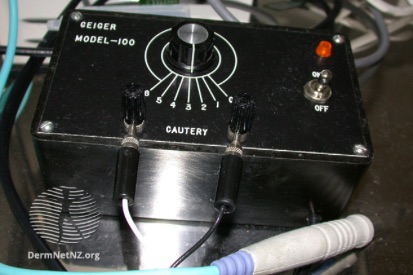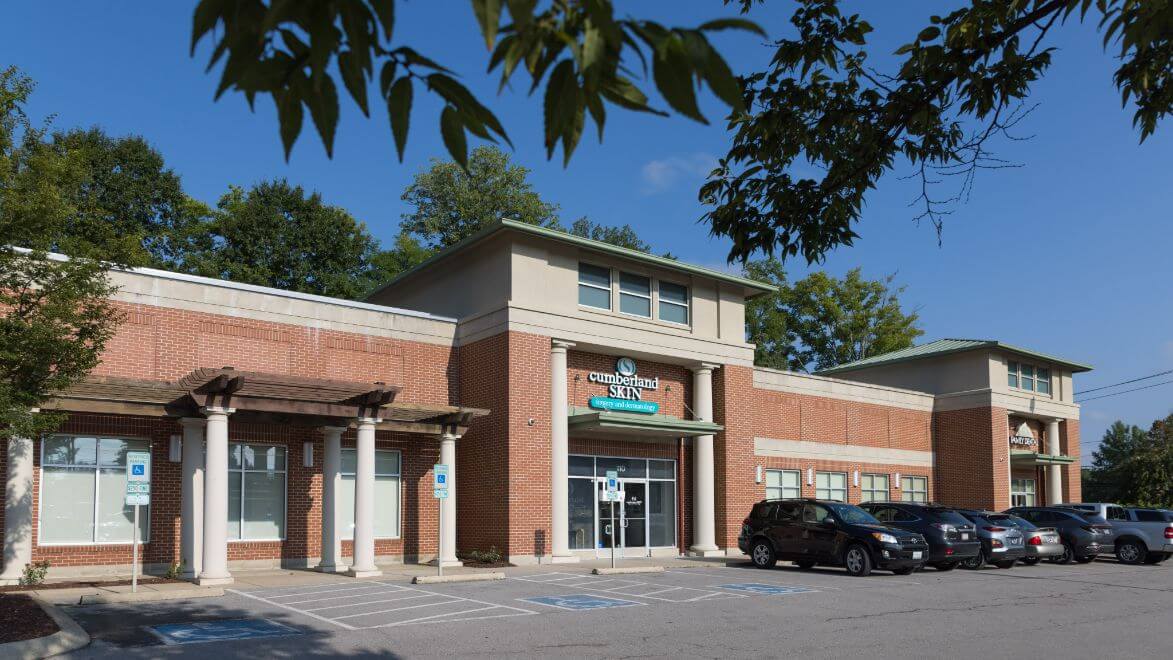Curettage
Gentle Removal of Skin Lesions with Curettage
At Cumberland Skin, we offer curettage, a dermatological procedure used for skin cancer treatment. It is done by scraping off the top layers of skin using a curette, a sharp, spoon-shaped instrument. This technique is commonly used to remove superficial skin lesions, such as certain types of skin cancers, warts, or noncancerous growths. The area may be numbed with a local anesthetic before the procedure.
EXAMPLES OF CURETTAGE



Curettage Explained
It may be used to remove benign growths such as warts or cysts or as part of a biopsy procedure to investigate suspicious or potentially cancerous skin lesions. The procedure is considered minimally invasive and is commonly performed on an outpatient basis. Dermatologists utilize curettage as a versatile tool for both diagnosing and treating a range of skin issues.
Benefits of Curettage
- Benign Lesion Removal: Effectively removes benign skin issues like warts and cysts for cosmetic improvement.
- Diagnostic Tool: Provides a sample for accurate diagnosis, aiding in identifying skin conditions.
- Skin Cancer Treatment: Minimally invasive option for superficial skin cancers, offering simplicity and effectiveness resulting in minimal scarring.
- Outpatient Convenience: Typically performed on an outpatient basis, curettage allows for a swift return home with minimal downtime.
How Cumberland Skin Can Help
Curettage FAQs
Curettage means the removal of tissue or growth by scooping or scraping with a curette tool. This special technique is typically used to remove cancerous and non-cancerous lesions.
Curettage removes skin cancer by scraping away cancerous cells and destroying the remaining cells through the use of electrodesiccation (burning the area with an electric needle). In most cases, dermatologists perform curettage in many layers to remove the lesion. You can expect three cycles of curettage and electrodesiccation.
This type of skin cancer treatment aims to completely eliminate any cancerous cells and is highly effective, with cure rates up to 95%.
Curettage is used primarily for small lesions or growths. This type of skin cancer treatment is not recommended for high-risk sites or aggressive forms of skin cancer. Similar to cryosurgery, curettage has the best cure rate for superficial basal cell or squamous carcinomas.
Curettage is most often performed on the trunk of the body. This type of treatment is not recommended for difficult sites, such as the eyelids, genitalia, lips and ears, or any cosmetically sensitive sites, as the procedure leaves a sizable, hypopigmented scar.
In most cases, patients can go home the same day as treatment. The procedure wound usually takes around 2 to 3 weeks to heal and leaves a scar, which is typically flat and round.
What to Expect at Your Curettage Appointment
The Curettage process involves using a spoon-shaped instrument to scrape away the targeted skin lesion, with attention to complete removal. After the procedure, wound care instructions and any necessary dressing will be provided. You'll receive post-treatment guidelines, including activities to avoid and skincare routines.
How to Prepare for a Curettage
Planning for Recovery after Curettage
After the curettage procedure, your provider will put a dressing on the area. It’s important that this dressing stays on for 24 hours following the procedure and that it does not get wet.
After 24 hours, it’s time to change the dressing. First, thoroughly wash your hands with soap and water. Then, remove the old dressing and gently wash the site with soap and warm water. It’s crucial that you do not scrub or scratch the site. Next, pat the area dry, cover it with a thick ointment, and apply a bandage.
During your curettage recovery period, make sure to not submerge the area until the site is completely healed. Furthermore, avoid taking blood thinners, as the area may occasionally bleed after you leave the clinic.
Featured Products

EltaMD Moisture-Rich Body Cream
EltaMD Moisture-Rich Body Crème infuses compromised and dry, flaky, sensitive skin with long-lasting moisture and essential nutrients. It is the ideal daily moisturizer to help achieve and maintain softer, smoother, healthy-looking skin. 8 oz / 226 g

Pinnacle Skin Care Mineral Nourishing Sunscreen Spray SPF 50
Our all-mineral, sweat-resistant sunscreen spray features zinc oxide with hydrating aloe and vitamin E. This lightweight formula combines broad-spectrum UVA/UVB SPF 50 sun protection. Perfect for active lifestyles and long hours in the sun. Water-resistant up to 80 minutes.
Related Blog Posts

- Skin Cancer
- General Dermatology
- Skin Exams
- Sun Safety
If your dermatologist finds a suspicious mole during your TBSE, hey want to perform a skin biopsy.
Read More
- Skin Cancer
- Skin Exams
Discover the ABCDEs of melanoma. Familiarize yourself with the five key indicators to aid in early detection and prompt medical attention for any suspicious moles or skin lesions.
Read More
- Skin Cancer
- General Dermatology
- Skin Exams
- Sun Safety
Uncover the unparalleled benefits of Mohs surgery. Learn how this precise technique ensures minimal tissue removal while maximizing cancer removal rates, offering patients superior outcomes in skin cancer treatment.
Read More

